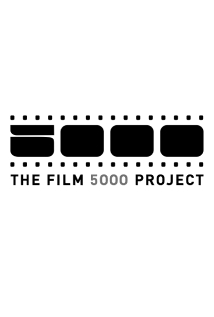

In a supreme example of style overtaking subject, Belgian multimedia artist and video essayist Johan Grimonprez (Dial H-I-S-T-O-R-Y, Double Take, Shadow World: Inside the Global Arms Trade) weaves a freeform tapestry of archival footage to create a jazz-influenced video essay. His subject is how, in the early 1960s, African-American musicians like Louis Armstrong, Nina Simone, Duke Ellington, and Dizzy Gillespie were sent by the State Department to Africa and the Middle East as good-will "jazz ambassadors" to distract from covert C.I.A. operations. The film specifically focuses on an American and Belgian-led regime-change plot to murder Patrice Lumumba, the elected leader of the Democratic Republic of Congo. The historical account's musical aspect is primarily used as the motivation for the film's style. The narrative about Armstrong's visit to Africa, Gillespie's earlier tour of the Middle East and subsequent candidacy for president, and how other jazz musicians and Black artists protested Lumumba's murder quickly fall into the background of the meat and potatoes of this political exploration.
Grimonprez weaves these iconic Jazz figures into the mix enough to justify his presentation and title, but the focus quickly shifts away from the musicians and fully onto the more relevant political players: Soviet Chairman Nikita Khrushchev, UN Secretary-General Dag Hammarskjöld, President Dwight D. Eisenhower, CIA Director Allen Dulles, US Secretary of State John F. Dulles, Black nationalist and human rights leader Malcolm X, and several mercenaries, intelligence operatives, and Congalese politicians The entire narrative is conveyed via the quick juxtaposition of archival film clips, sound bites of statements by the various characters, and copious amounts of text on screen, all underscored by iconic jazz recordings. It's a Bebop approach to documentary, meaning the filmmaker is riffing on an established narrative to make his distinctive points rather than nearly following a fixed progression of historical facts. But, like improvisational jazz, this works a whole lot better if you are already well-acquainted with the composition/events being interpreted. I knew some of this history going in and could follow Grimonprez's narrative fairly well as the film unfolded, but I'm not able to retain most of the details the film covered. And I can't imagine someone coming to this film without any prior knowledge of the Cold War and US/European colonial involvement in the Congo.
Regardless of what you know going in, by the halfway point of this 2-hour and 30-minute film, the sheer information overload and repetitive nature of the presentation wears you out, and the various facts, quotes, and observations begin to blend into each other. There are some key points about how a region in the Congo was the primary supplier of Uranium, which is why Western powers were so fixated on it. However, the film seems more intended to impress than to inform. We're meant to get swept up in the filmmaker's editorial syncopation and ability to connect all sorts of obviously well-researched and collected historical facts, footage, and interviews. Still, I don't think the end result adds up to very much. The cinematic technique is so forceful that it is difficult to imagine how this story could have been told more traditionally. However, the musical aspect would undoubtedly have been more of a subplot and less the supposed main narrative of a more straightforward historical documentary. Based strictly on the story I think I saw told in the movie, that balance would have been far more appropriate.
Johan Grimonprez's Bebop-inspired approach to documentary filmmaking overpowers the story he tells about how jazz musicians were used as goodwill ambassadors to distract from a covert C.I.A. regime-change operation in Congo in the early 1960s.




